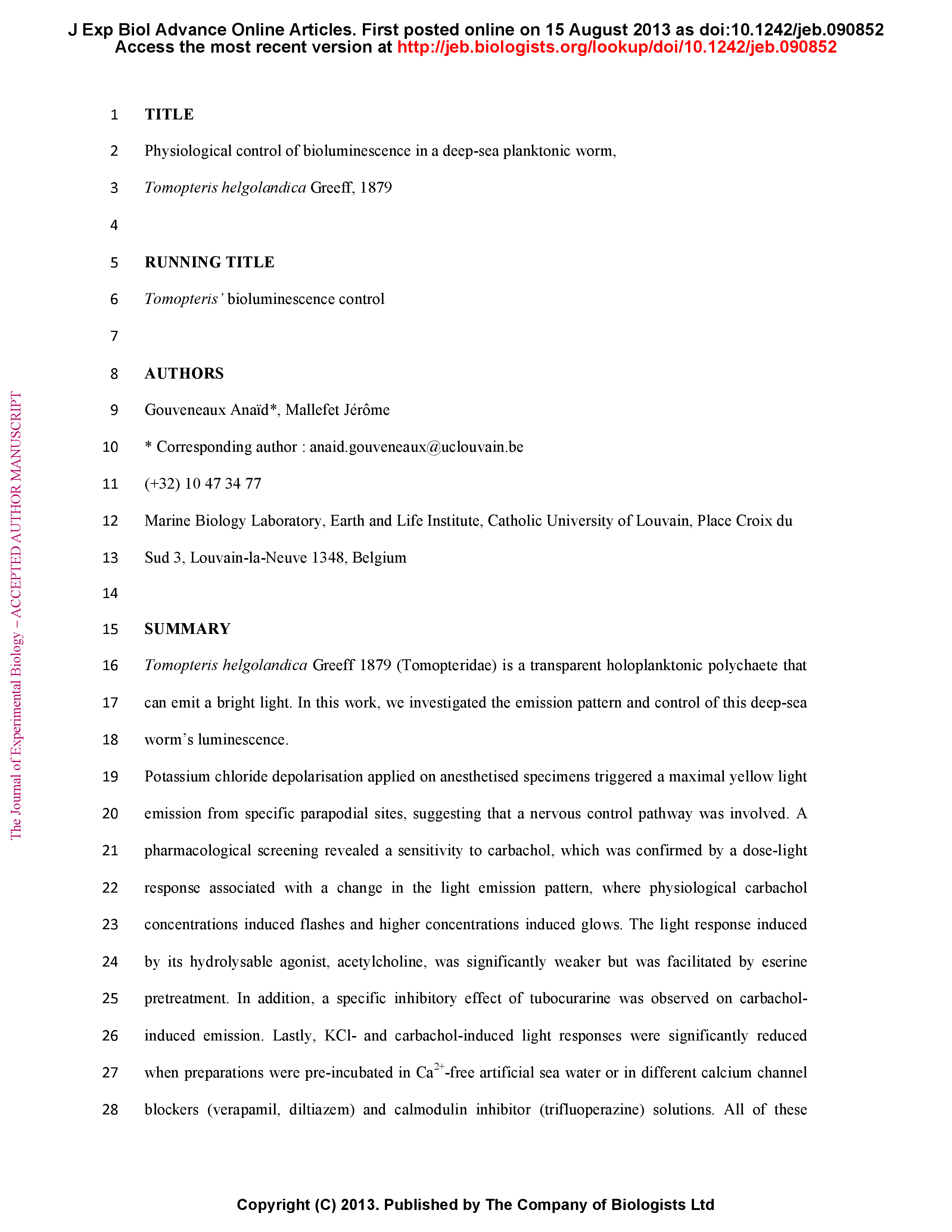Summary
Tomopteris helgolandica Greeff 1879 (Tomopteridae) is a transparent holoplanktonic polychaete that can emit a bright light. In this work, we investigated the emission pattern and control of this deep-sea worm's luminescence. Potassium chloride depolarisation applied on anesthetised specimens triggered a maximal yellow light emission from specific parapodial sites, suggesting that a nervous control pathway was involved. A pharmacological screening revealed a sensitivity to carbachol, which was confirmed by a dose-light response associated with a change in the light emission pattern, where physiological carbachol concentrations induced flashes and higher concentrations induced glows. The light response induced by its hydrolysable agonist, acetylcholine, was significantly weaker but was facilitated by eserine pretreatment. In addition, a specific inhibitory effect of tubocurarine was observed on carbachol-induced emission. Lastly, KCl- and carbachol-induced light responses were significantly reduced when preparations were pre-incubated in Ca2+-free artificial sea water or in different calcium channel blockers (verapamil, diltiazem) and calmodulin inhibitor (trifluoperazine) solutions. All of these results strongly suggest that T. helgolandica produces its light flashes via activating nicotinic cholinergic receptors and a calcium-dependent intracellular mechanism involving L-type calcium channels.








